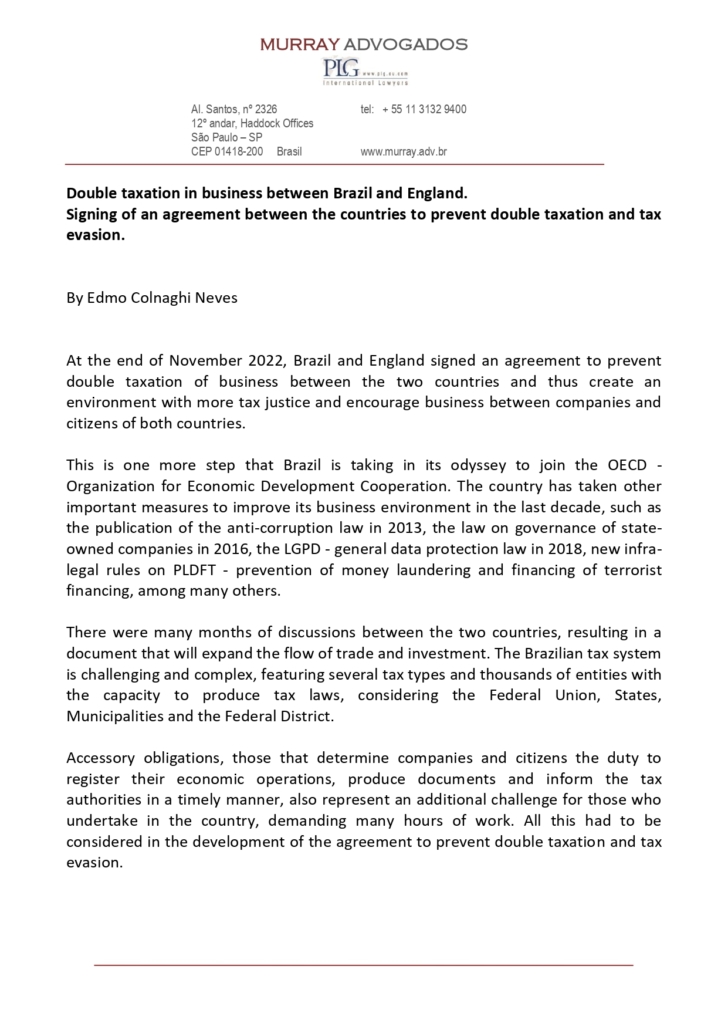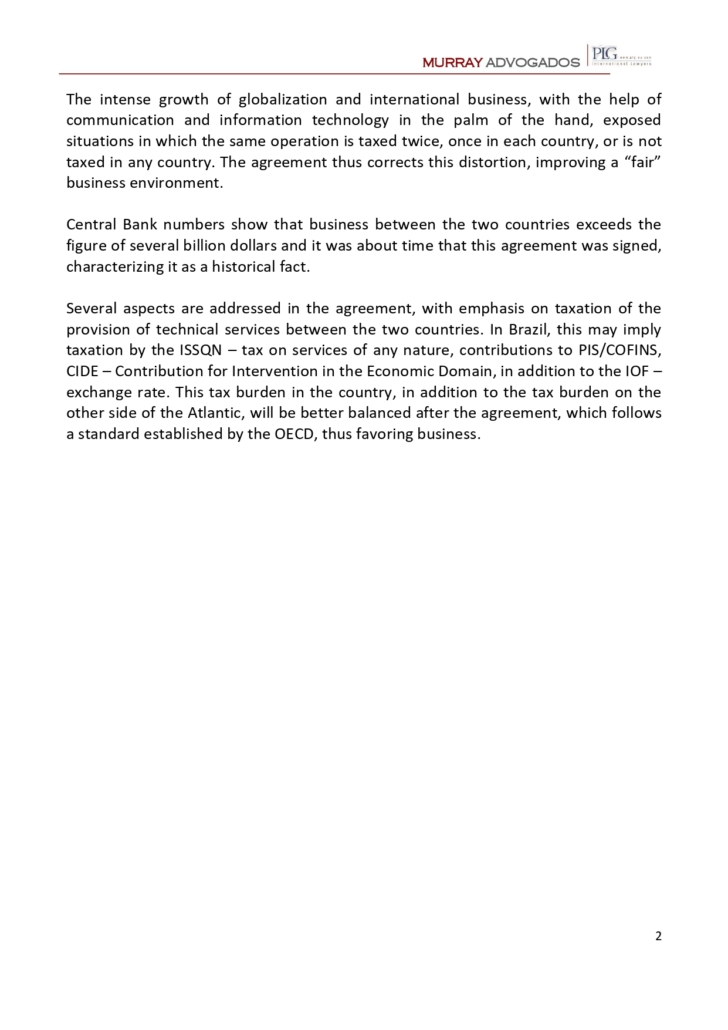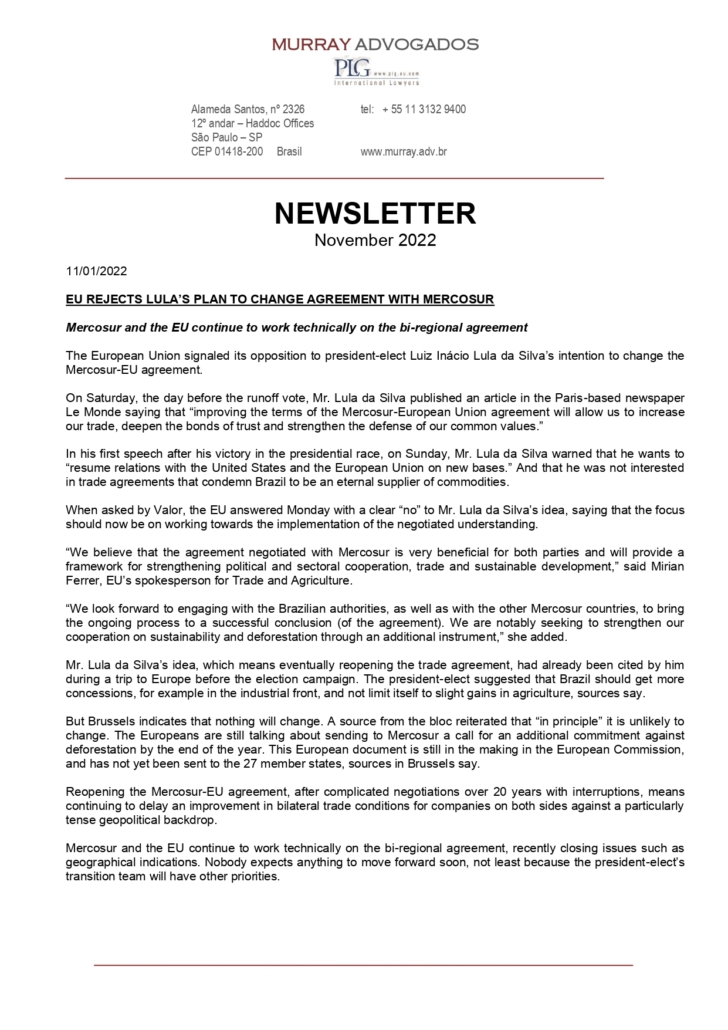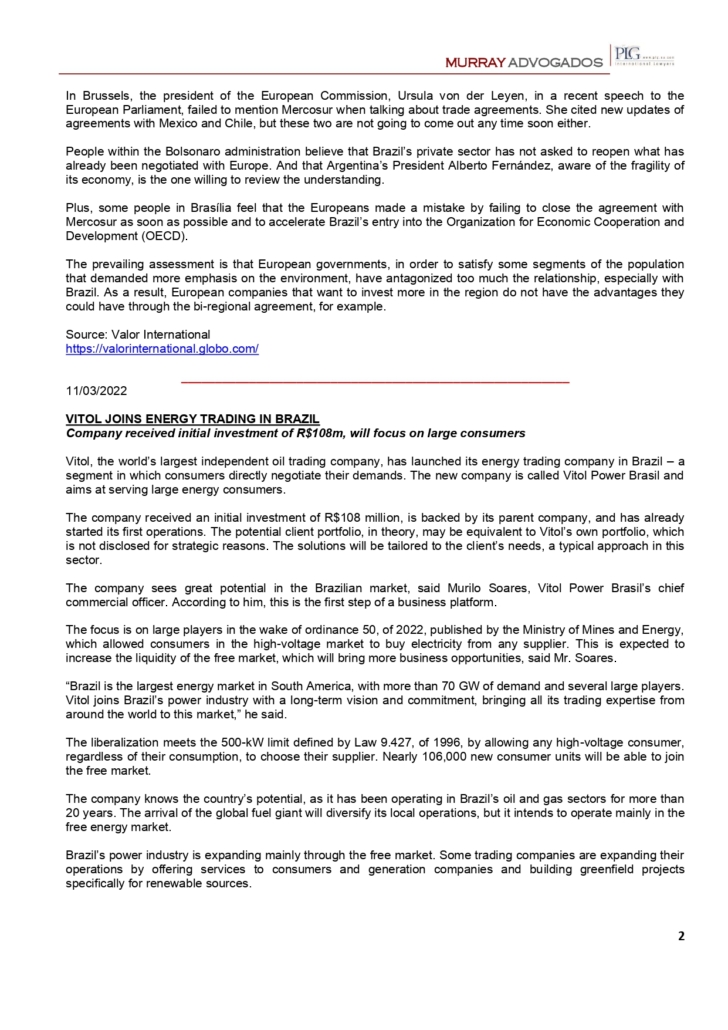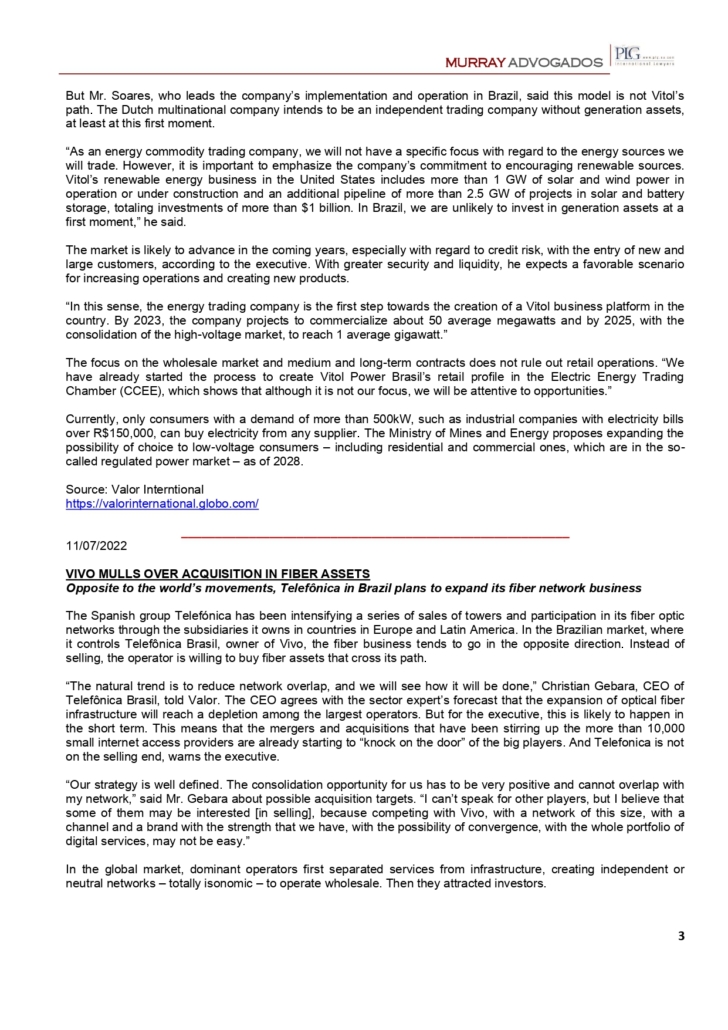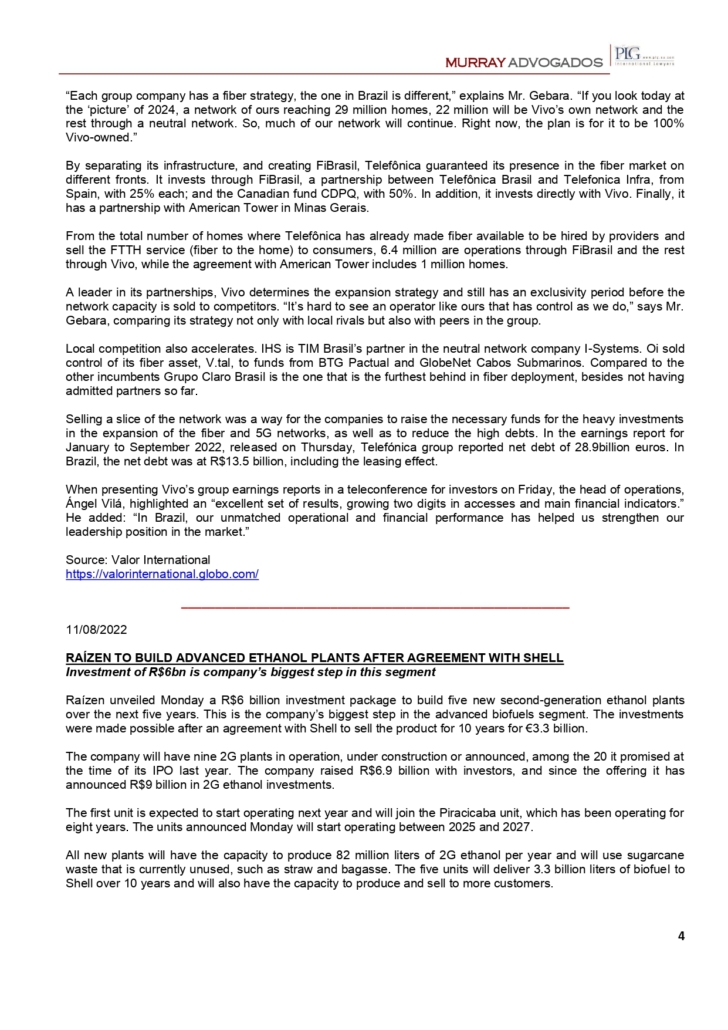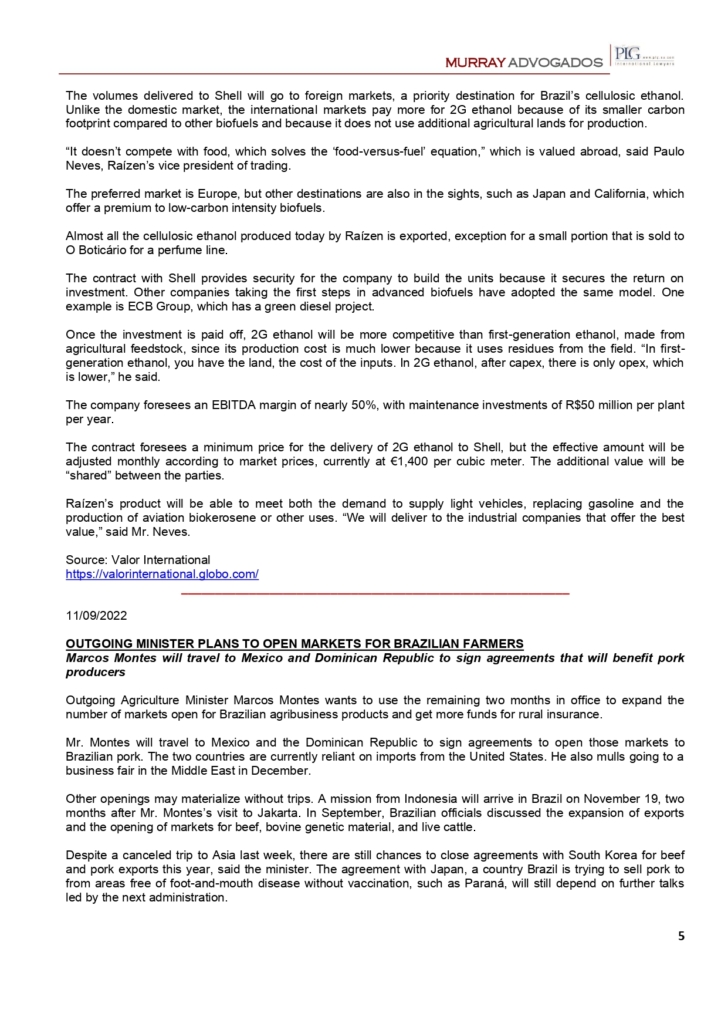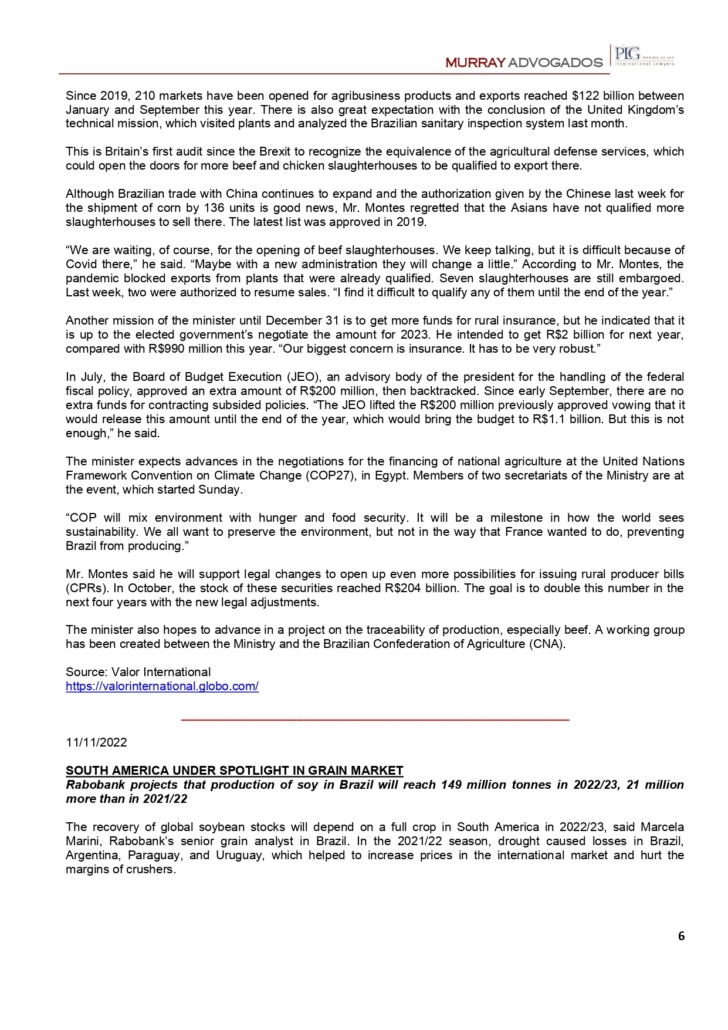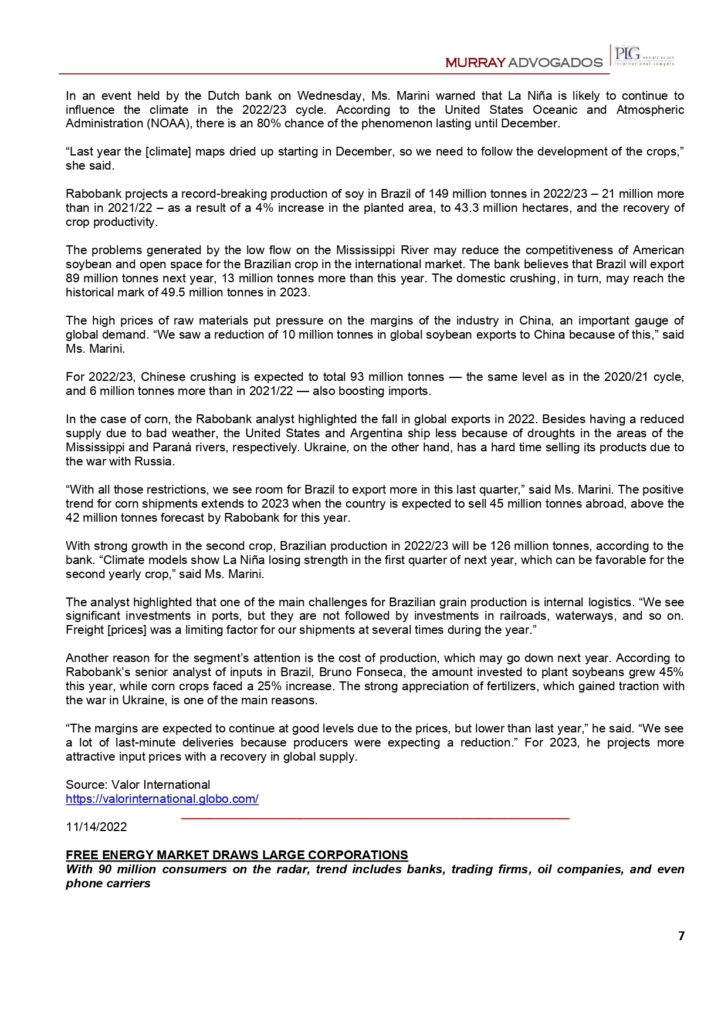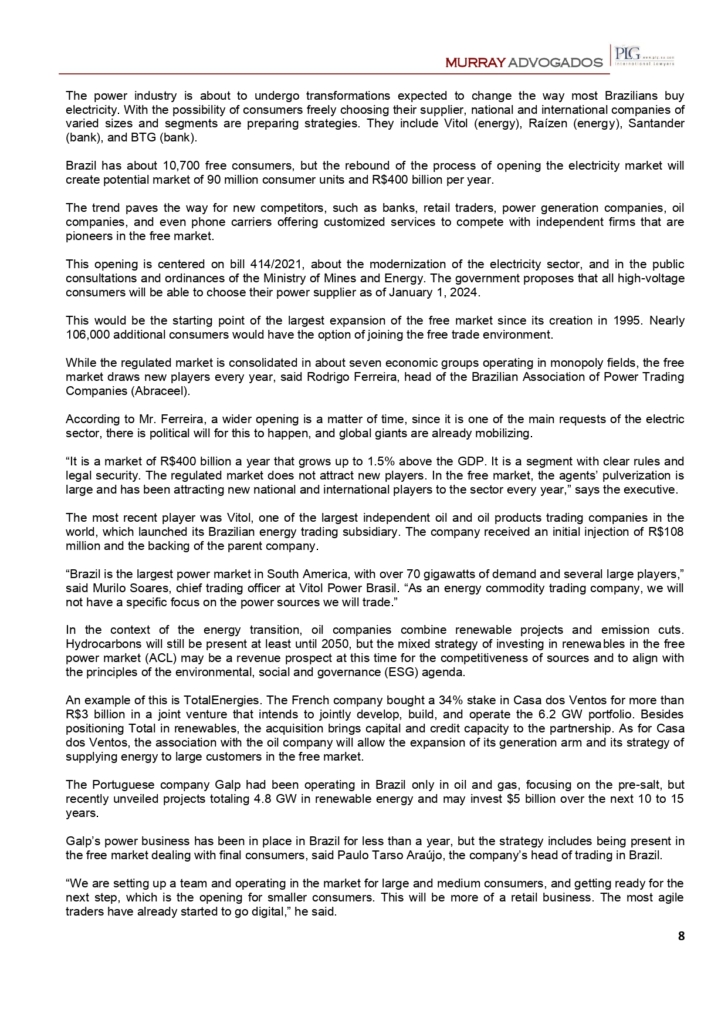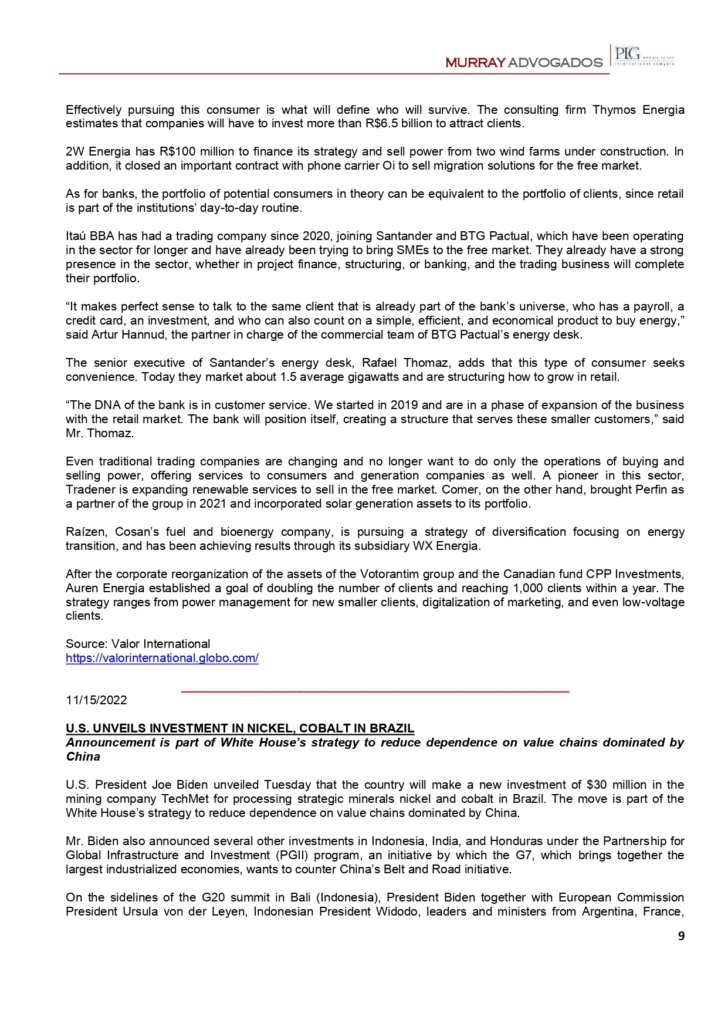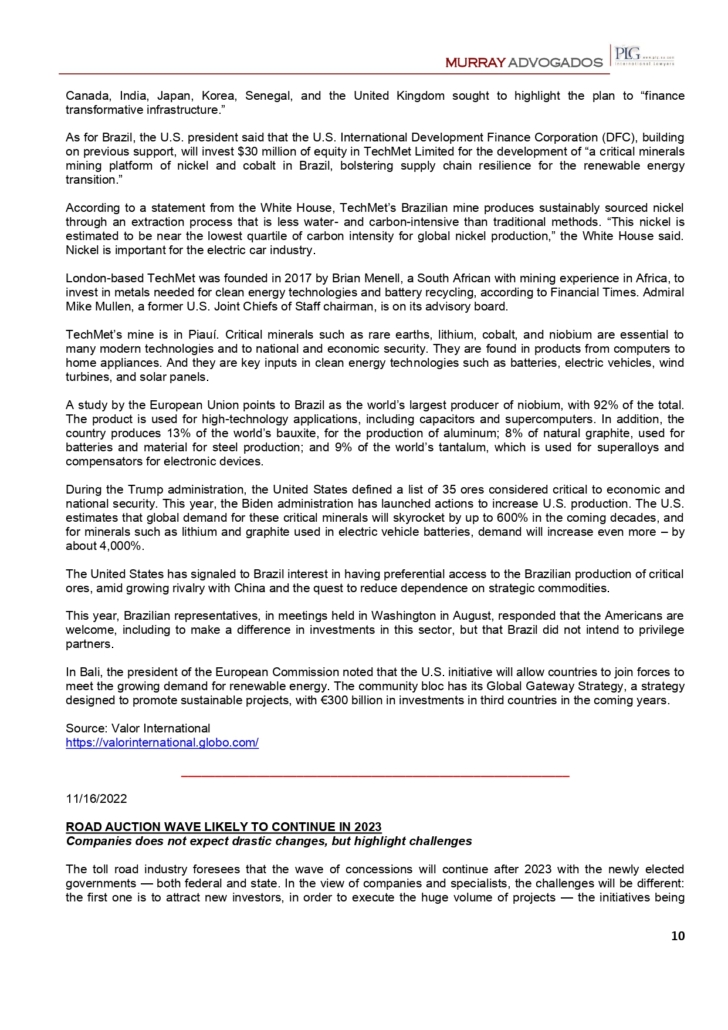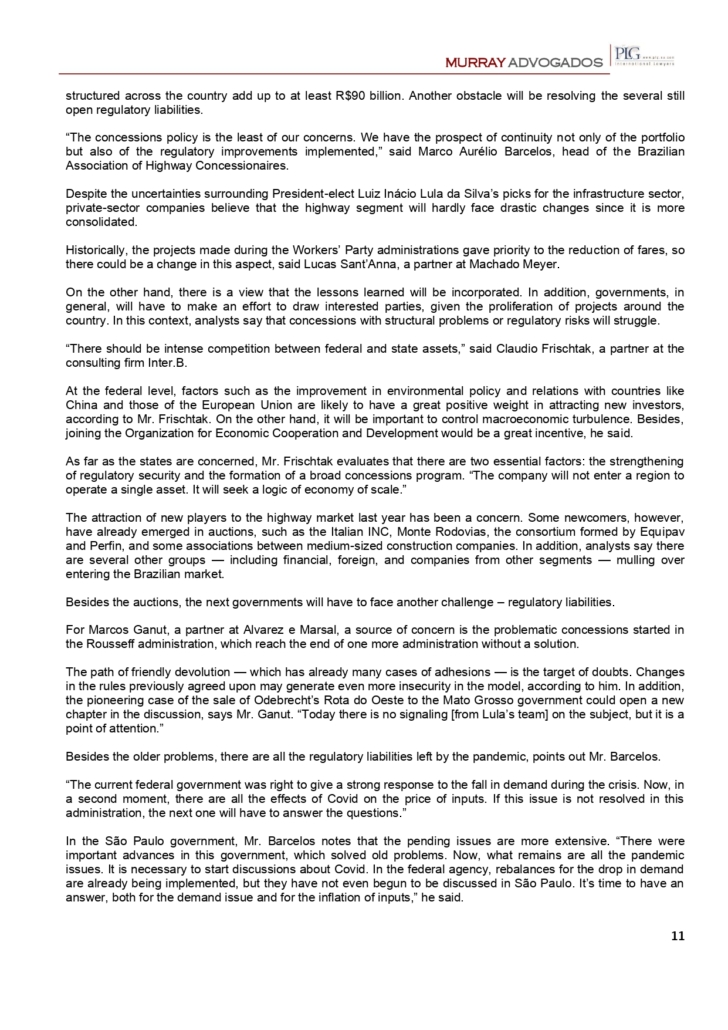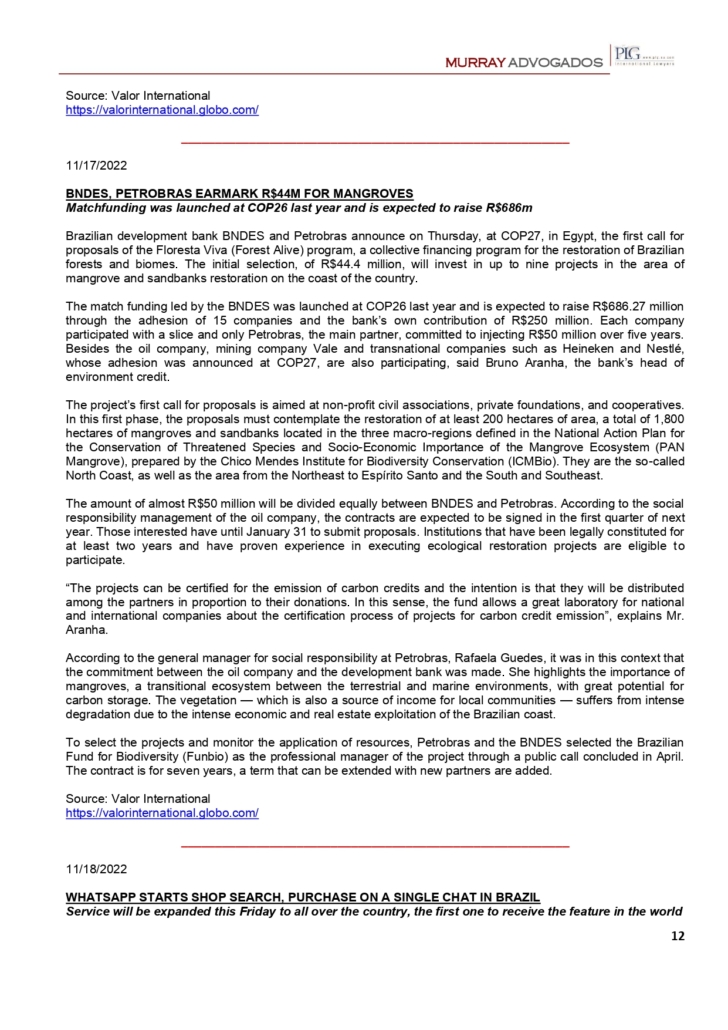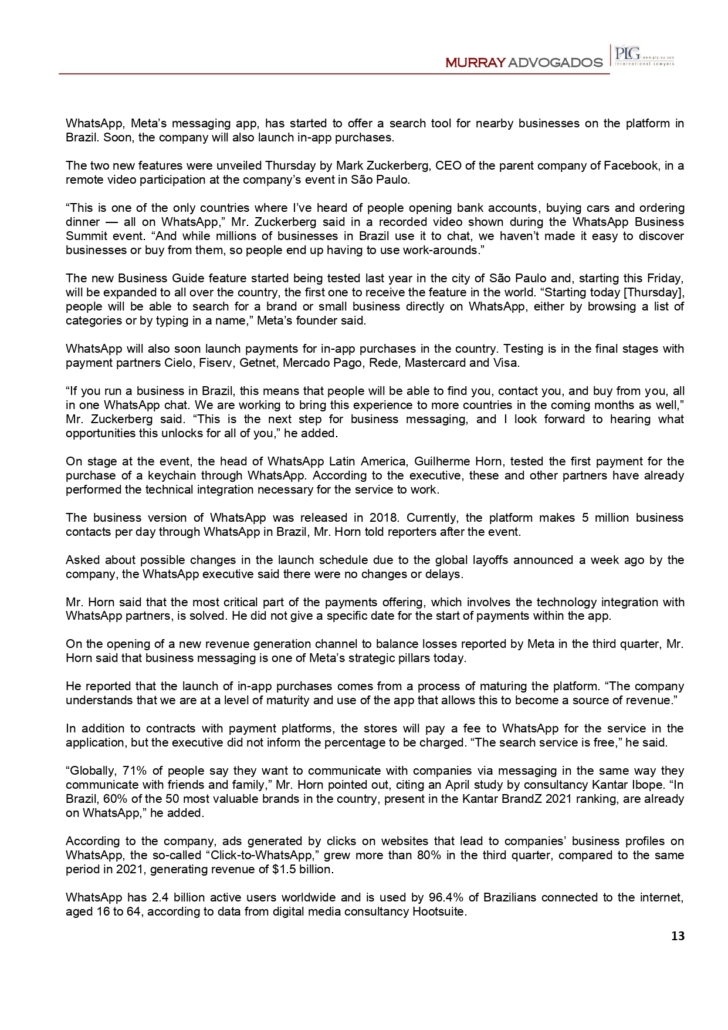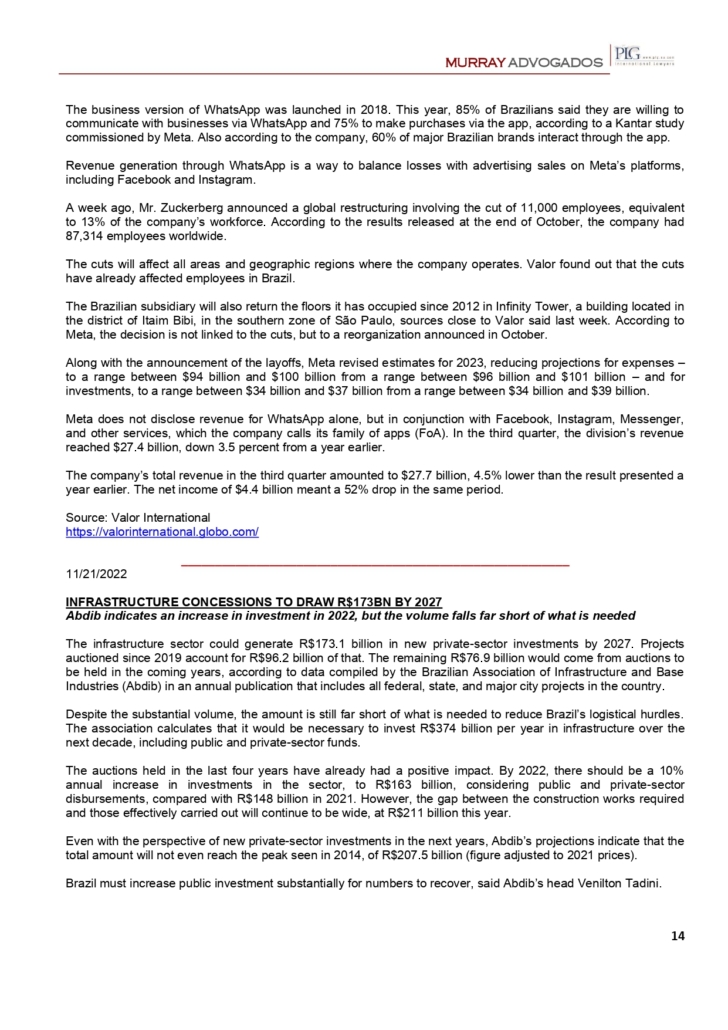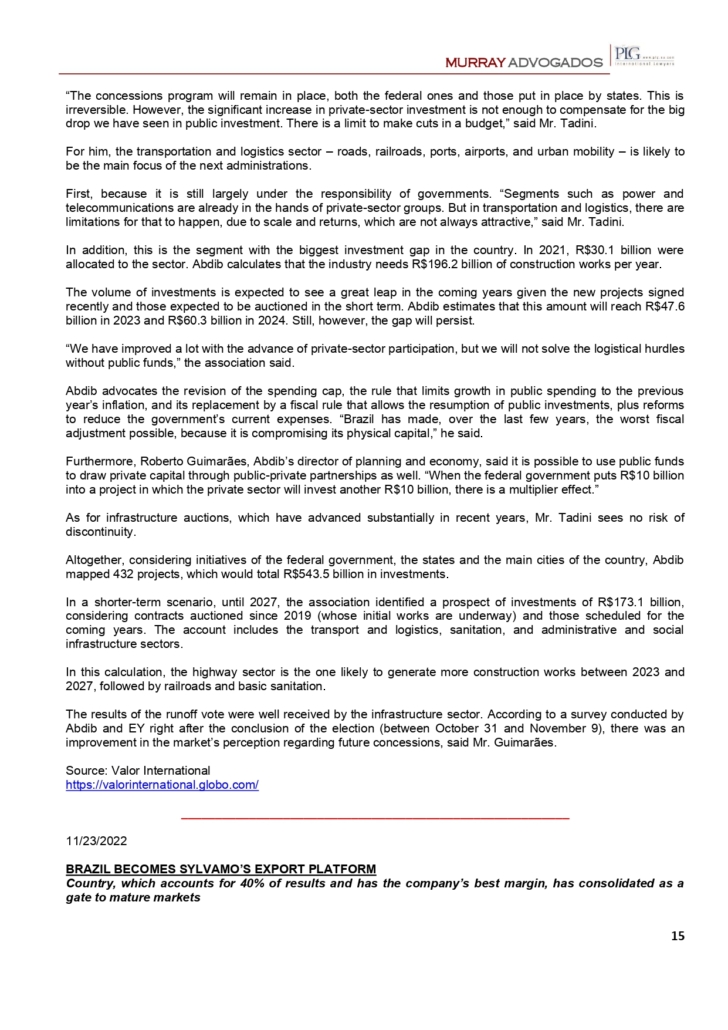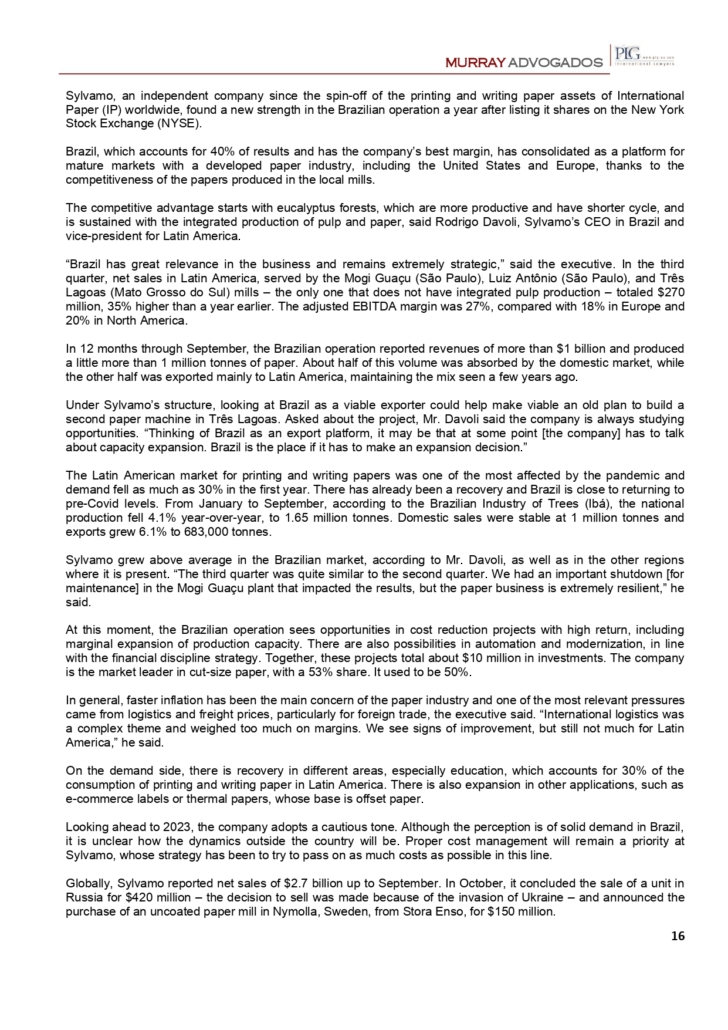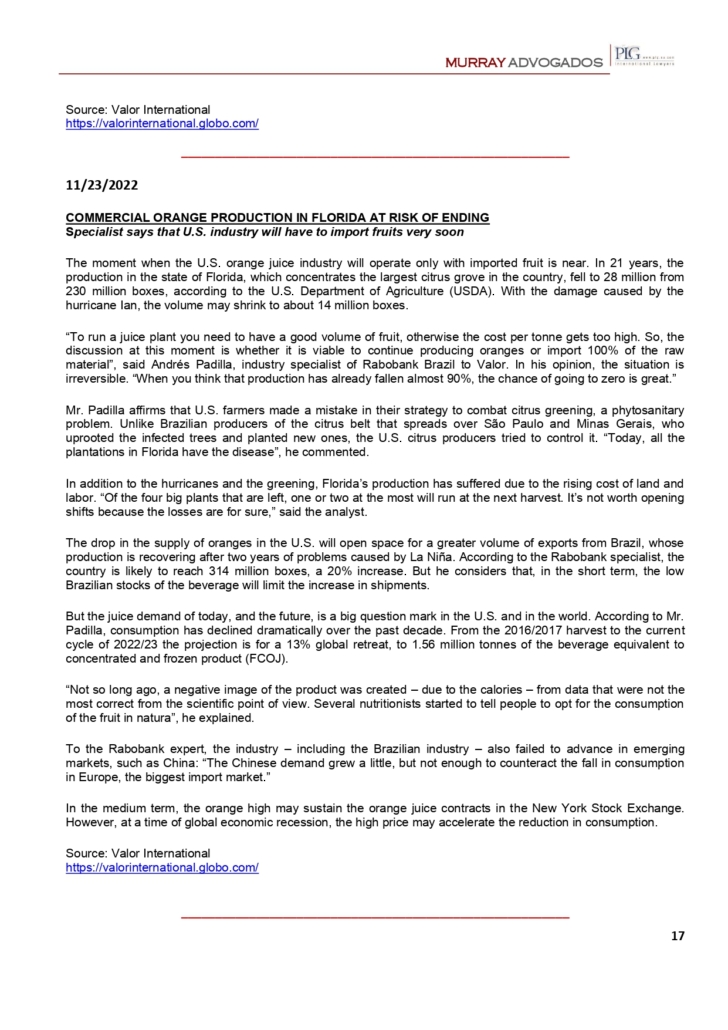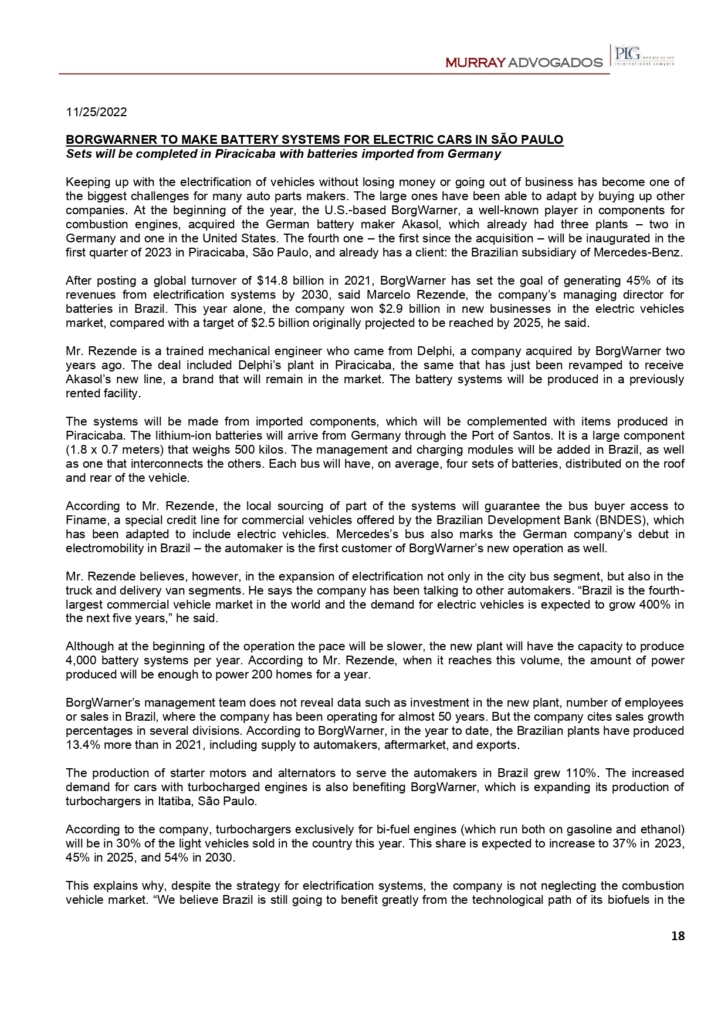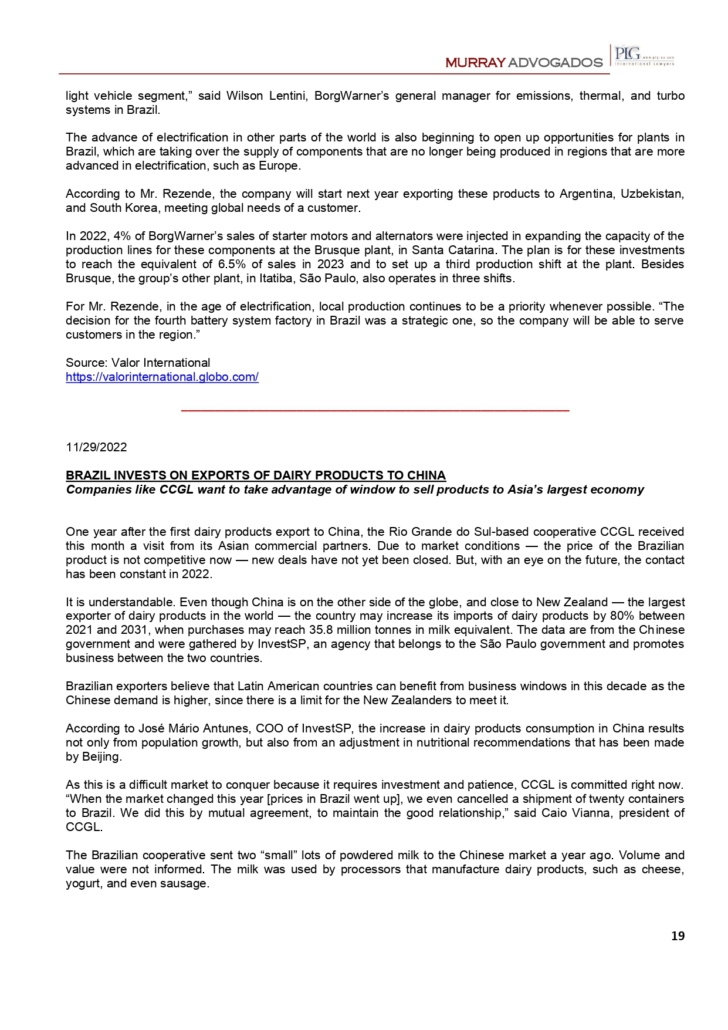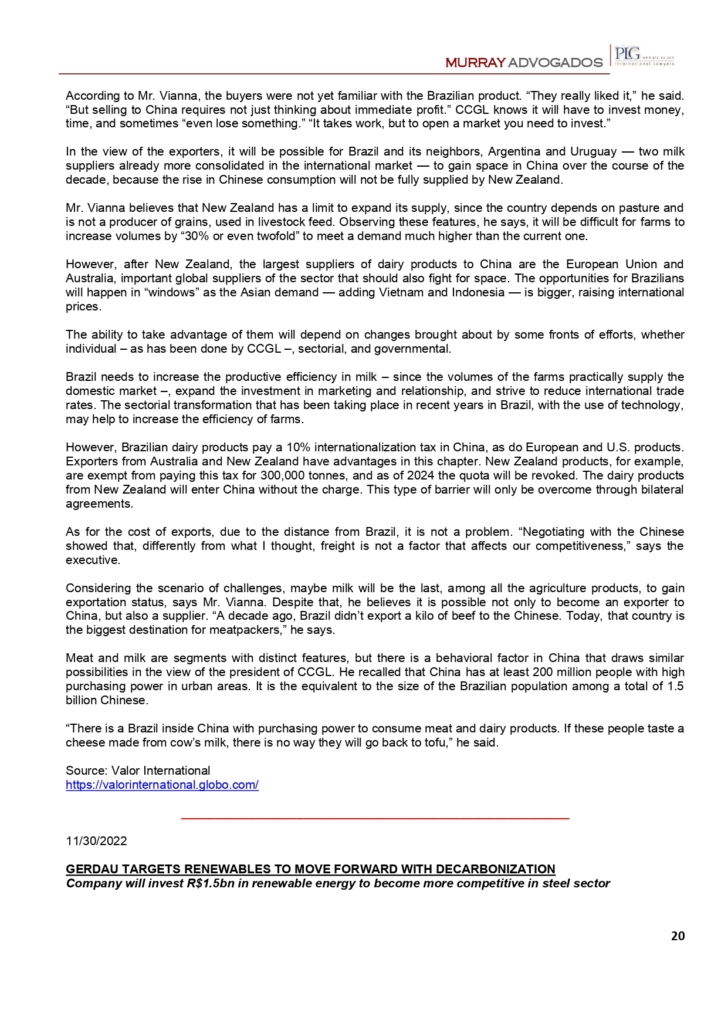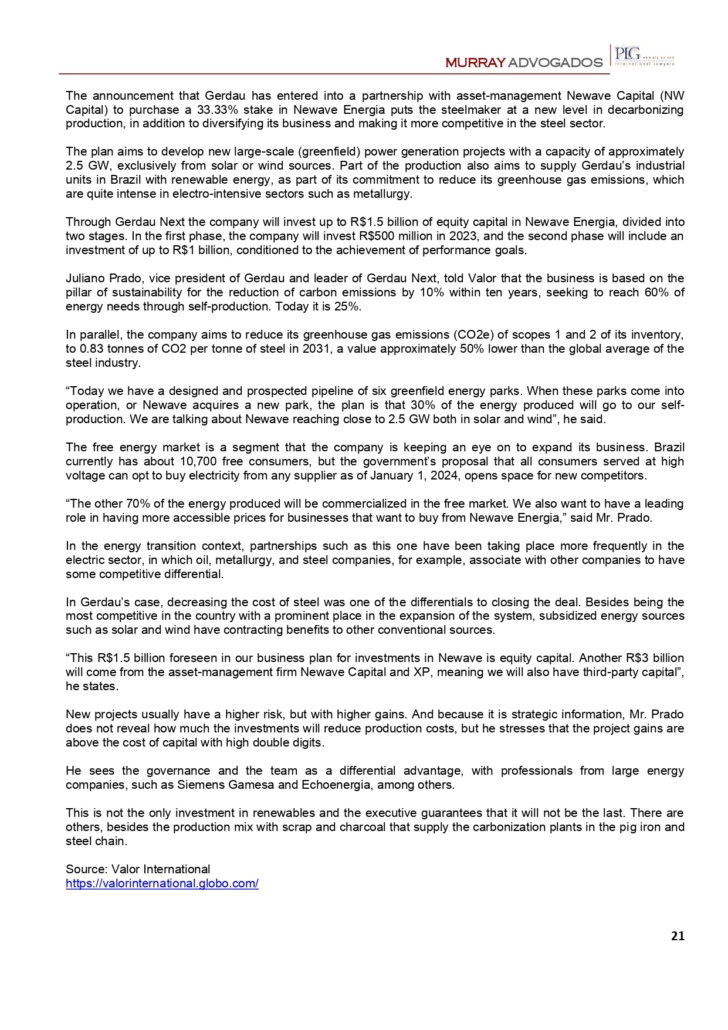Rate is the lowest for a quarter ending in October since 2014, IBGE says
12/01/2022
/i.s3.glbimg.com/v1/AUTH_37554604729d4b2f9f3eb9ad8a691345/internal_photos/bs/2022/u/C/VhJ3leSOyO3zRPMTkr0A/desemprego-marcelo-camargo-abr.png)
Result was below the July quarter, of 9.1% — Foto: Marcelo Camargo/ABr
The unemployment rate in Brazil was 8.3% in the October quarter. The result was below the previous quarter, which ended in July (9.1%), and also below the result of the same period in 2021 (12.1%), the National Household Sample Survey (Pnad) Continuous released on Wednesday by the statistics agency IBGE shows. It is the lowest result for a quarter ending in October since 2014 (6.7%).
The result was below the median expectations of 24 consultants and financial institutions consulted by Valor, which pointed to a rate of 8.5% in the quarter ending in October 2022. The figure was also below the floor of the projections, which ranged from 8.4% to 8.7%. In the September quarter, the rate was 8.7%.
The number of workers without a formal contract in the private sector reached a new record: 13.4 million people, with an increase of 2.3% compared to the immediately preceding quarter and 11.8% compared to the same quarter of 2021 (1.4 million more workers).
According to the coordinator of Work and Income of IBGE, Adriana Beringuy, the drop in the unemployment rate is the result of the combination of the continued downward trend observed since mid-2021 and seasonal factors, since the labor market typically improves at the end of the year.
The trajectory of market recovery started in July 2021, recalls Ms. Beringuy, is linked to the progress of the vaccination against Covid-19, and also to the resumption of face-to-face activities, such as services.
The election may also have helped the labor market in the period, according to her, because there was an increase in the number of workers in segments such as other services and information, communication and financial, real estate, professional and administrative activities, which may include people involved in the electoral campaign.
“People who work in electoral campaigns can appear in the other services segment (within associative services, if hired by parties to distribute flyers and propaganda, for example) and also in the information and communication segment — if outsourced,” she said.
Ms. Beringuy clarified that although it is not possible to specifically measure the number of workers in these groups who are involved in election-related activities, it is clear that there has been an increase in the number of people employed in those segments.
The number of workers employed in information, communication, financial, real estate, professional and administrative activities grew 2.8% in the October quarter, compared with the immediately preceding quarter (324,000 more people). The number of people employed in other services, on the other hand, advanced by 4.5% (232,000 people). In the labor market average, the increase was lower, at 1%.
In the three months through October, the country had 9 million unemployed — people aged 14 or more who looked for a job but could not find one. The number indicates a contraction of 8.7% compared with the previous quarter, which ended in July (860,000 fewer people), and a drop of 30.1% compared with the same period in 2021 (3.9 million fewer people). It is the lowest number of unemployed people since the quarter ended in July 2015.
Between August and October, the employed population (employees, employers, civil servants) rose to 99.7 million people, a new record since records began, in 2012. This represents an increase of 1% compared to the period between May and July (1 million more people employed). Compared to the same quarter in 2021, it rose 6.1% (5.7 million people).
The labor force — that is, people aged 14 and older who are employed or looking for a job — was 108.7 million in the October moving quarter, a statistically stable level compared with the previous moving quarter ended in July and up 1.7% compared with the same period last year (1.8 million more people).
*By Lucianne Carneiro — Rio Janeiro
Source: Valor International
Brazilian meatpackers are unlikely to comply with the requirements of new legislation, an analysis by think tank Chain Reaction Research shows
12/01/2022

Brazilian meatpackers JBS, Marfrig and Minerva are unlikely to meet the requirements of the law that the European Union is expected to pass next week to block imports of commodities linked to deforestation (legal and illegal) occurred after December 2020.
According to an analysis by the think tank Chain Reaction Research (CRR), the law will impact the operating profits of these companies, which also risk paying fines for environmental damages in their chains.
CRR drew estimates with data from alerts of deforestation from the Real Time Deforestation Detection System (DETER), of the National Institute for Space Research (INPE), and not the annual data from the Measurement of Deforestation by Remote Sensing (PRODES), which are typically used by NGOs and companies – INPE only released PRODES data for the Amazon rainforest for the last year.
It also used data from INCRA, and not from the Rural Environmental Registry (CAR), which is commonly used by NGOs and prosecutors.
CRR estimated that the suppliers of the three companies deforested 81,000 hectares after the cut-off date of the European law, including 72,600 hectares within the restriction of the rule. The difference would correspond to deforestation in Cerrado areas which, as the draft legislation stands today, would not be blocked.
In the case of JBS, CRR estimates that 50,000 hectares have been deforested between December 31, 2020 and July 2022 in the supplying farms. In Marfrig’s chain, deforestation is estimated at 18,000 hectares. In Minerva’s chain, it is estimated at 12,000 hectares.
CRR also estimated the damage to earnings reports, since the companies will not be able to export to the EU the meat from cattle from these areas. The impact on overall EBITDA would total 1.8% (JBS), 2.7% (Marfrig), and 5.3% (Minerva).
JBS would lose 0.6% of its EBITDA with these fines, while Marfrig would lose 0.7%, and Minerva, 2.4%. Fines may reach 4% of sales to the EU member state.
JBS criticized the CRR report and the EU law. The company said it is in talks with the EU to “discuss the best strategies” to “ensure the sustainability of the chain,” and that it believes that it could reach that “only with collaboration and technical and financial support to producers, instead of an exclusive focus on blocking.”
For JBS, the CRR “is based on a mistaken methodology” by not using the CAR, as recommended by Imaflora, and by using INCRA databases, which are “not adequate for the analysis in question.” It also said that the CRR “is not transparent” by not “specifying the offending farms, preventing the company from analyzing, clarifying, and acting accordingly.”
JBS said it already monitors direct suppliers and is implementing a tool to extend control to indirect suppliers until 2025.
For its part, Marfrig sent a 17-page letter to CRR in which it detailed the actions of the Marfrig Verde + program to monitor its entire chain until 2025 in the Amazon and until 2030 in the Cerrado. The deadlines are beyond the cut-off date of the EU law. So far, the company already monitors all direct suppliers in the Amazon and Cerrado, 71% of indirect suppliers in the Amazon and 70% in the Cerrado.
Marfrig said that it monitors fires in the Amazon and that when there is overlap with farms, an alert makes it reassess purchases until the situation is clarified.
The company also said that its chain in Mato Grosso, where most of its cattle come from, will be audited in 2023. But its risk map shows Pará as the focus of the greatest risks.
Minerva sent to Valor a four-page document saying that “it is able to meet the most demanding markets and clients” and that its “suppliers operate under the most diverse protocols of quality, health and sustainability from different countries.”
The company affirmed that its goal is to monitor its entire chain in South America until 2030 and that it already monitors all direct suppliers in Brazil and Paraguay. In Colombia, monitoring is at 80%, and in Argentina, at 90%. The company said it provides them with an application, Visipec, to monitor indirect suppliers. And stressed that it was one of the best evaluated in the sector in the last audit of direct suppliers in the state by prosecutors in Pará, referring to 2020.
Marfrig and Minerva declined to comment on the CRR report specifically. None of the three companies cited in CRR’s analysis commented on the impacts that the approval of the law in the EU will have on their businesses.
*By Camila Souza Ramos — São Paulo
Source: Valor International
Priority is expansion of fluff pulp, a market in which the company is already among the fourth largest in the world
12/01/2022
/i.s3.glbimg.com/v1/AUTH_37554604729d4b2f9f3eb9ad8a691345/internal_photos/bs/2022/U/g/gwkBqjQAe1Ry76rUKFoQ/01emp-100-klabin-b3-img01.jpg)
Cristiano Teixeira — Foto: Silvia Zamboni
The largest producer and exporter of packaging paper in Brazil and leader in the paper packaging market, Klabin has chosen Santa Catarina State for its next cycle of growth. The investment will start with fluff pulp, used in the production of menstrual pads and disposable diapers, but will also cover paper and packaging.
With three growth projects underway – in Paraná, São Paulo, and Ceará – the company is designing a future expansion round in the state where it already has industrial operations. The plan is to install between 1 million and 1.2 million tonnes per year of additional capacity of different products, such as fluff pulp, sack kraft, and kraft liner, in the Otacilio Costa and Correia Pinto plants, in the next few years.
Klabin does not yet disclose investment forecasts for this new cycle. However, based on similar projects and considering recent inflation which has further affected machinery and equipment costs, market sources heard by Valor estimate that a package with these features are expected to demand investments of $3 billion to $3.3 billion.
Klabin’s management had already indicated its intention to expand the production of fluff pulp. With the Puma I project, in Ortigueira (Paraná state), the company has become the fourth largest in the world in this segment, whose production is concentrated mainly in North America.
“We did not present a proposal about the fluff to the Board of Directors, but we are carrying out studies and we foresee fluff and long fiber as the main products in which the company is likely to invest in the future,” said CEO Cristiano Teixeira at the opening of Klabin Day, on Wednesday.
According to the executive, the risk of global recession has led the company to postpone the discussions about the new growth cycle, so a formal project may be submitted for approval by the board only at the end of next year or the beginning of 2024. Initially, the project was expected to be submitted for approval in the first half of 2023, but the global context has changed. If approved, the investment would start to be executed in 2024, and operate after 24 months.
In the pulp sector, the big bet in the short and medium term is on fluff. According to Alexandre Nicolini, head of Klabin’s pulp business, this type of pulp currently represents 10% of the global market, and specialized consulting firms project an expansion of 3.5% per year until 2040.
Just as it did in the Puma II project, which is in the construction phase of the second paper machine, the MP 28, the plan is to also to execute the new expansion cycle in stages.
According to the initial design, the new fluff pulp line would have priority and an installed capacity of 500,000 to 600,000 tonnes per year, together with a sack kraft machine of 200,000 to 250,000 tonnes per year. The kraft liner investment would come in the second phase.
The forest base to cope with the expansion is estimated at 100,000 to 120,000 hectares and Klabin has begun to prepare it. In Santa Catarina, the planting has begun on an additional 35,000 hectares for the project.
The company plans to invest R$5.4 billion in 2023, of which R$2.2 billion in maintenance and R$1.1 billion in special projects, including Figueira and Horizonte plants, said Marcos Ivo, the company’s financial and investor relations director.
The Puma II project, the largest investment in the company’s history, is expected to receive another R$2.1 billion over the next year. Puma II’s second paper machine, the MP 28, focused on paper boards, will go into operation in the second quarter of next year.
“The modernization or substitution of the Monte Alegre plant boiler is still under study, and we have two alternatives that indicate a lower investment than expected. The forecast is to conclude the studies and submit them to the board of directors for approval during the first half of the year,” said Mr. Teixeira.
If the project is approved, the disbursements planned for 2023 will refer to preparatory works and are already included in the total investment announced for the year.
According to the executive, the company’s sales volume in the next five years will benefit from the new capacities that have already started to operate, increasing the share of corrugated cardboard packaging and paper in the revenues.
“Historically and structurally, the Ebitda of packaging is more resilient and stable, especially in corrugated paper and paper board,” said the executive, adding that, for 2023, the vision for the average price of board in the international market implies at least a double-digit increase.
Given the new projects, the return on invested capital (ROIC) should continue to advance in the coming years, added Mr. Ivo. Between 2016 and 2022, this indicator was 14% on average, compared to 9% in previous years. From 2023 on, the forecast is for an average ROIC above that 14%.
“Looking ahead, we are confident in indicating that the ROIC will be higher as the projects since Puma I mature,” said the executive.
*By Stella Fontes — São Paulo
Source: Valor International
Technology does not have defined date to start being commercialized in Brazil
11/30/2022

Brazilian Agricultural Research Corporation (Embrapa) and Helix, a company of the Agroceres group, presented last week the cultivars of the first transgenic corn event developed entirely in Brazil from a fully national public-private partnership started in 2013.
The new BTMAX comes from a gene of the bacterium Bacillus thuringiensis (Bt) and shows high efficacy against fall armyworm. The transgenic plants are not attacked by the pest, which can help increase the production and productivity of crops.
Approved by the National Technical Commission for Biosafety (CTNBio) in June, the technology does not yet have a defined date to start being commercialized in Brazil. Helix also seeks the commercial release of the event in other countries, so that the material can be planted by producers and exported normally.
“BTMAX corn does not present cross-resistance with proteins present in commercial events that already present resistance breakdown,” said Cesar Camilo, a researcher at Helix.
“We have demonstrated that this technology stands out for specifically using Brazil’s biodiversity to solve, also in a specific way, problems of our pests in cultivated plants, pests of the tropical world,” said Urbano Ribeiral Junior, chief financial officer at Agroceres.
“The Brazilian corn is a commodity; the technology is not. We have a huge potential to become a market phenomenon,” said Frederico Durães, general manager of Embrapa’s corn and sorghum division.
*By Rafael Walendorff — Brasília
Source: Valor International
As Embraer’s deliveries of business jets totaled 52 units by September, plane maker is under pressure on the fourth quarter to meet this year’s target of 100 units

11/30/2022
Those interested in buying a new Embraer business jet currently face a waiting line of 2.5 years, as the Brazilian company’s production slots are fully booked by then. The arrival of parts is also delayed, a situation expected to normalize only in 2024.
The demand for business jets, especially the small ones, gained momentum with the Covid-19 pandemic and benefited the Brazilian company, which is the global leader in the segment. For 10 years now, Phenom 300 has been the world’s best-selling aircraft in its category. Still, bottlenecks in the supply chain have limited airplane production in general and required manufacturers to do a lot of tactical planning.
As Embraer’s deliveries of business jets totaled 52 units by September, the company is under pressure on the fourth quarter to meet this year’s target of 100 units.
The scenario is relatively similar in commercial aviation, a business that suffers in particular from a lack of engines. Embraer’s orders have not yet returned to the level seen before the pandemic. Embraer delivered 27 E175 and E195-E2 aircraft by September, less than half the target for the year.
“We have the challenge of delivering 60 aircraft in the commercial aviation business and 100 business jets. We are confident that we can reach the target, but we can miss one or another aircraft and still meet the revenue guidance,” said Antonio Carlos Garcia, Embraer’s chief financial and investor relations officer, on Tuesday.
The company foresees delivering between 60 and 70 commercial aircraft and 100 to 110 business jets this year and had already indicated that it is likely to reach the floor of these ranges.
In the world market for jets with up to 100 seats, the Brazilian plane maker has an 86% share and is likely to reach 95% in the future, because of the limited number of competitors in this segment. The United States is the main market, but Latin America has been developing as well, said Mr. Garcia.
“Who is buying? A lot of new people that buy smaller jets when they join the market,” he said. For the coming years, Embraer’s business aviation business is expected to sell 100 to 120 units a year.
In commercial aviation, the lack of pilots in the United States, the financial crisis faced by airlines, and the lack of engines have curbed sales in volume. In the global market of jets with 100 to 150 seats, the company estimates its market share at 30%. “Embraer will probably need at least two years to operate with higher volumes,” he said.
Embraer, the third-largest plane maker in the world, is on track to post net sales of $8 billion in 2026 if the average pace of revenue growth of 12% seen in recent years is maintained. The future contribution of Eve, the urban air mobility subsidiary, is not included in these projections.
In 2019, before the crisis triggered by the pandemic and the end of talks with Boeing involving the commercial aviation business, Embraer reported net sales of $5.4 billion. For this year, the company expects a range between $4.5 billion and $5 billion. However, due to hurdles in the supply chain, the company’s revenue is likely to be between $4.6 billion and $4.7 billion, said Mr. Garcia.
As for the consolidated operating results, Embraer projects this year an adjusted EBIT margin of 3.5% to 4.5% and an adjusted EBITDA margin of 8% to 9%. The actual results could be even better, according to the executive.
The bottom line is expected to be “slightly negative” in 2022, compared with the original projection of profit. Adjusted cash flow, which returned to positive territory in 2021 after two years of burning cash, could be “much better” than a positive $150 million if year-end deliveries come in on schedule. “The people didn’t stop to watch the Brazilian team’s World Cup game Monday because of the number of planes we have to deliver. The parts are arriving at very short notice to finish the aircraft,” he said.
*By Stella Fontes — São Paulo
Source: Valor International
Company will invest R$1.5bn in renewable energy to become more competitive in steel sector
11/30/2022
The announcement that Gerdau has entered into a partnership with asset-management Newave Capital (NW Capital) to purchase a 33.33% stake in Newave Energia puts the steelmaker at a new level in decarbonizing production, in addition to diversifying its business and making it more competitive in the steel sector.
The plan aims to develop new large-scale (greenfield) power generation projects with a capacity of approximately 2.5 GW, exclusively from solar or wind sources. Part of the production also aims to supply Gerdau’s industrial units in Brazil with renewable energy, as part of its commitment to reduce its greenhouse gas emissions, which are quite intense in electro-intensive sectors such as metallurgy.
Through Gerdau Next the company will invest up to R$1.5 billion of equity capital in Newave Energia, divided into two stages. In the first phase, the company will invest R$500 million in 2023, and the second phase will include an investment of up to R$1 billion, conditioned to the achievement of performance goals.
/i.s3.glbimg.com/v1/AUTH_37554604729d4b2f9f3eb9ad8a691345/internal_photos/bs/2022/T/G/R3foBYRXeAdLM2ovDYwA/30emp-200-next-b2-img01.jpg)
Juliano Prado — Foto: Claudio Belli/Valor
Juliano Prado, vice president of Gerdau and leader of Gerdau Next, told Valor that the business is based on the pillar of sustainability for the reduction of carbon emissions by 10% within ten years, seeking to reach 60% of energy needs through self-production. Today it is 25%.
In parallel, the company aims to reduce its greenhouse gas emissions (CO2e) of scopes 1 and 2 of its inventory, to 0.83 tonnes of CO2 per tonne of steel in 2031, a value approximately 50% lower than the global average of the steel industry.
“Today we have a designed and prospected pipeline of six greenfield energy parks. When these parks come into operation, or Newave acquires a new park, the plan is that 30% of the energy produced will go to our self-production. We are talking about Newave reaching close to 2.5 GW both in solar and wind”, he said.
The free energy market is a segment that the company is keeping an eye on to expand its business. Brazil currently has about 10,700 free consumers, but the government’s proposal that all consumers served at high voltage can opt to buy electricity from any supplier as of January 1, 2024, opens space for new competitors.
“The other 70% of the energy produced will be commercialized in the free market. We also want to have a leading role in having more accessible prices for businesses that want to buy from Newave Energia,” said Mr. Prado.
In the energy transition context, partnerships such as this one have been taking place more frequently in the electric sector, in which oil, metallurgy, and steel companies, for example, associate with other companies to have some competitive differential.
In Gerdau’s case, decreasing the cost of steel was one of the differentials to closing the deal. Besides being the most competitive in the country with a prominent place in the expansion of the system, subsidized energy sources such as solar and wind have contracting benefits to other conventional sources.
“This R$1.5 billion foreseen in our business plan for investments in Newave is equity capital. Another R$3 billion will come from the asset-management firm Newave Capital and XP, meaning we will also have third-party capital”, he states.
New projects usually have a higher risk, but with higher gains. And because it is strategic information, Mr. Prado does not reveal how much the investments will reduce production costs, but he stresses that the project gains are above the cost of capital with high double digits.
He sees the governance and the team as a differential advantage, with professionals from large energy companies, such as Siemens Gamesa and Echoenergia, among others.
This is not the only investment in renewables and the executive guarantees that it will not be the last. There are others, besides the production mix with scrap and charcoal that supply the carbonization plants in the pig iron and steel chain.
*By Robson Rodrigues — São Paulo
Source: Valor International
Yet, government is looking for options to fund infrastructure investments
11/29/2022
/i.s3.glbimg.com/v1/AUTH_37554604729d4b2f9f3eb9ad8a691345/internal_photos/bs/2022/I/i/ToVJDERcWwumXbFBfpmw/29agr-100-parana-b12-img01.jpg)
Norberto Ortigara — Foto: Ari Dias/AEN
The reaction of the productive sector in Paraná has buried the state government’s project that intended to tax agribusiness to create a fund for investment in infrastructure, an area that was left unattended after the federal government lowered the sales tax ICMS on fuel on the eve of the elections, plus the fact that the state administration did not renew highway concessions.
Norberto Ortigara, the secretary of agriculture of Paraná, told Valor that the government understood the producers’ revolt about the way the project was presented. The sector, which was responsible for the re-election of Governor Ratinho Júnior, had a strong reaction against the taxation “shoved down its throat” which prevented the drama from having a different outcome than in Goiás, where the state’s deputies approved a similar proposal. “It didn’t sit well with the sector, we acknowledge that they got upset.”
According to Mr. Ortigara, the state administration wants to negotiate a different and viable text with the productive sectors to create a “palatable” contribution for investments in infrastructure.
The fiscal instability is delicate and will require some tax collection measures, said Mr. Ortigara, who is unsure about the possibility of approving the new measure this year. “If nothing is done, even maintaining the current highways will be difficult. There is a brutal drop in tax collection in the state and the municipalities,” he pondered.
The intention is to promote a “dialogue” with the agribusiness and other sectors of the Paraná economy that use the state infrastructure for the collective construction of an alternative. “I no longer believe in that bill due to the way it was presented. We need to build a greater understanding starting from scratch,” he said. “We have to see if there is room to create something similar and if we can make some kind of contribution so that there can be investments.”
But the sector is not willing to give in. Ágide Meneguette, president of the Federation of Agriculture of the State (Faep), reinforced that the sector will not pay the bill alone. “We know that the cash flow has decreased, but we will not accept any kind of new contribution or taxation. If it comes, we will work against it,” he told Valor.
José Roberto Ricken, president of the Paraná Organization of Cooperatives (Ocepar), pointed out that the bill was “absolutely unfeasible” given the scenario of increased costs in the field and climate risks. “Why producers are the only ones to pay for the infrastructure? Are they the only ones who use the roads? There is no room for this type of charge. It will be chaos if this prevails. We are mobilized to prevent this from happening”, he affirmed.
Mr. Meneguette recalled that the entity supported the increase in the ICMS tax rate in the state for some products, from 18% to 19%, approved by the Legislative Assembly this week. “We have to split this bill. It is fair that the society, in general, pays for Bolsonaro’s act of reducing taxes and affecting the budgets of states and municipalities”, he said.
The victory of the sector this week, with the government retreat and withdrawal of the taxation project, is the result of the “democratic pressure” that showed the importance of producers actively participating in the country’s decisions, he said. “The pressure has shaken some deputies, there is no willingness or vote for this anymore.”
In Goiás, there was a riot and invasion of the floor vote, but even so, the deputies approved the taxation. “We are against invading and wreaking havoc on the deputy’s house because we have always fought the invasion of our properties, but we want respect. Violence will not help us to achieve our goals,” said Mr. Meneguette.
According to the Faep leader, they have been warning the government about infrastructure problems since 2017, but neither the current nor the previous administration decided to renew the highway concessions, which expired this year. “I advocate the least possible participation of the state in the economy and in the lives of Brazilians. The state does not have the agility of private initiative,” he said.
The government says that it does not have funds to maintain the highways or to start new projects, such as the paving of rural roads. “The majority of Paraná’s producers have less than 50 hectares, whose income barely guarantees their survival. If they were not organized in cooperatives, they would no longer be in rural activity,” added Mr. Ricken, of Ocepar. “The profitability of the companies that operate in the commercialization of grains doesn’t exceed 2%, on average. So where will these funds come from?”
*By Rafael Walendorff — Brasília
Source: Valor International
Project is installed at a substation in Registro, São Paulo, operated by the company
11/29/2022
/i.s3.glbimg.com/v1/AUTH_37554604729d4b2f9f3eb9ad8a691345/internal_photos/bs/2022/X/G/rcDBRGQKGYlKDkq1DRHQ/270722isa26.jpg)
Rui Chammas — Foto: Silvia Zamboni/Valor
Isa Cteep has put into operation the first large-scale battery power storage system in the Brazilian transmission system. The battery project is installed at a substation in Registro, São Paulo, also operated by the company.
The battery systems have 30 megawatts of power and are capable of delivering 60 megawatt-hours of energy for two hours to a region of up to 2 million people. The goal is for them to act during peak consumption periods on the Southern Coast of São Paulo during the summer, especially in the year-end holidays, ensuring additional supply.
In all, there are 10 containers with 180 racks of lithium batteries, which were imported from China, and occupy an area of nearly 5,000 square meters, equivalent to half of a soccer field. The executive director of projects, Dayron Urrego, and the company’s chief executive, Rui Chammas, said that the technology is expected to avoid interruptions in the power supply during load periods.
The system is planned to go into operation the moment Brazil’s national grid operator ONS gives the order. The company estimates that they will probably be used on average 12 times a year. The criterion for choosing the region was that studies pointed out that the southern coast of São Paulo has a power deficiency and should be supplied by a transmission line from the 2017 auction, which is not yet ready.
“During the summer, it is common to have a higher demand than the system can supply, so the batteries come in to supply the peaks of this demand, but they can also have other uses,” said Mr. Urrego. “The biggest peak is in the summer because of the use of air-conditioning, besides moments like Christmas and New Year’s Eve.”
Storage systems are considered the next technological frontier in the energy transition, because they play the role of guarantee of supply since they have characteristics – such as inertia, frequency, and voltage controllers – necessary for the operation of the system with due security and resilience.
In addition, the insertion of intermittent renewable generation, such as solar and wind, which cannot be stored in their original forms, has generated a series of operational complexities for the electric system.
This instability creates a challenge for the ONS, which orchestrates the mix of all sources to meet real-time demand, which also varies. Batteries are important because their command is in human hands and does not depend on the sun, wind, and rain.
“Energy transition brings opportunities and responsibility to make intermittent renewable energy be absorbed in the best possible way. We who invested in the first digital stations for better control of the equipment now get into batteries and think about using this technology and flow control,” said Mr. Chammas.
The amount invested approved by the Brazilian Electricity Regulatory Agency (Aneel) was R$146 million and is part of a total disbursement for reinforcement and improvement, which in the third quarter of this year reached R$471 million.
As a result, the Colombian company will have allowed annual revenues (RAP) of R$27 million. Mr. Chammas said that the regulator’s determination was that they should be put in place before the beginning of the summer – which in Brazil starts on December 21 – so that they would be entitled to the investment.
“Aneel authorized us to do the project. In one year, we did the engineering project, acquired the batteries from China, prepared the land, installed the construction, and energized it,” he said.
Because it is a disruptive technology, this topic still has no regulation at Aneel. Mr. Chammas considers it fortunate that the process fell under the rapporteurship of the agency’s director Sandoval Feitosa, who advocated the project’s approval.
The next reserve power auction is expected to be neutral regarding the technology to be adopted. Until now, these auctions were oriented toward gas-fired thermal generation. “If this is confirmed, we will have a great opportunity,” the CEO said.
*By Robson Rodrigues — São Paulo
Source: Valor International

